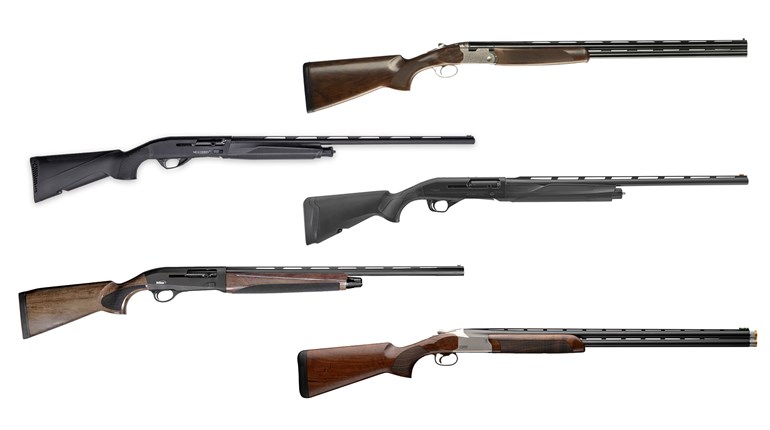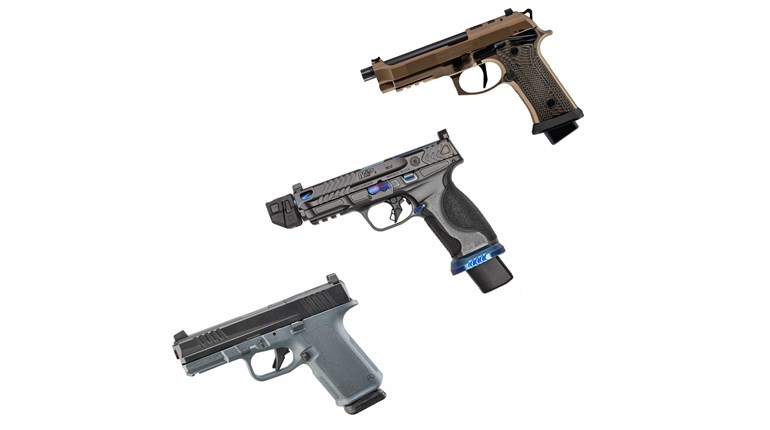
This article, "The Beretta BM59," appeared originally as a Classics column in the December 2017 issue of Shooting Illustrated. To subscribe to the magazine, visit the NRA membership page here and select Shooting Illustrated as your member magazine.
The military history of John Garand’s legendary semi-automatic rifle is typically situated in the Second World War and through the Korean War. Even though it lived on through the mid-’50s in National Guard, reserve and training units, the M1’s U.S. service history was over by that time. But, the spirit of John Garand extended beyond the M1 with the M14’s adoption, and it also stretched through to the end of the 1980s in foreign military service, thanks to the development of another rifle that modified some of the basic elements of the M1’s design to become the Fucile Automatico Leggero Beretta BM59 battle rifle.
In 1949, Italy joined the North Atlantic Treaty Organization (NATO), and the following year it began obtaining M1 rifles from the U.S.A. through foreign military sales—more than 100,000 of them. But, by the mid-50s the Garand was a bit of a dated design in need of modernization. Battle rifles of that era had developed toward a specific group of features—lightweight, selective-fire, magazine-fed and chambered for the new 7.62 NATO cartridge—and the M1 needed work in every category in order to conform to that standard. Toward that end, an engineer at Beretta named Domenico Salza took on the mission of improving John Garand’s masterpiece, resulting in the Beretta BM59.

At first he simply designed a modification that converted the M1 rifle from the M2 .30-caliber cartridge to the new 7.62 NATO caliber with the installation of a new barrel, but then Salza set out to decrease the size and weight of the Garand, simplify its feed mechanism and introduce its combat-proven operating mechanism to full-automatic fire-control components. This began with the BM59 E—the “BM” standing for “Beretta Modified”—a rifle that incorporated several new features: a recoil compensator/flash suppressor, a recoil pad and a proprietary, 20-round detachable-box magazine.
To facilitate feeding from the Beretta detachable magazine, the underside of the Garand’s bolt had to be milled with additional cuts, allowing it to clear the magazine’s feed lips. In addition, the Beretta BM59 E’s trigger housing had to be modified to accommodate a magazine release and to allow the insertion of the magazine through the floorplate. A clip guide mounted on top of the receiver in front of the rear sight made it possible for the magazine to be loaded by stripper clips, and a new Beretta-designed bolt stop replaced the Garand-designed clip latch. The M1’s operating rod also had to be shortened and then machined with a shoulder to disconnect the rifle’s sear-trip lever during full-auto fire. Beretta also produced a semi-auto only version that was designated BM59 SL.

These Beretta Modified M1s proved to be such a success that the company continued to develop Salza’s design, eventually going into production with complete Italian-made guns in five models. First, there was the standard Beretta BM59 Ital model with a 43.11-inch overall length and a light bipod, and the BM59 Mk. I with a shorter 40.5-inch overall length. Then there was the BM59 Mk. II that featured a full-length wooden stock and a pistol grip. The Mk. II was not used by the Italian military, but rather was an export model for the Nigerian Army. For mountain troops and airborne forces, there was the BM59 Mk. III, which was produced in two versions: the Alpini with a 43.7-inch overall length and the Paracadutisti with a 48.22-inch overall length. The Alpini and the Paracadutisti were both produced with the light bipod as well as a characteristic side-folding stock for compactness.

The Beretta BM59 Mk. IV SAW (squad-automatic-weapon) version, with its 44.48-inch overall length, a pistol grip and a heavy bipod, was also produced for export to Nigeria. Each of these variants of the BM59 featured a distinctive “tri-compensator”—a device combining a bayonet lug, a grenade launcher and a recoil compensator/flash suppressor in a single unit.
The Beretta BM59 was a success as a military weapon and was used not just by Italy and Nigeria (the latter well into the 1990s), but also Algeria, Morocco, Ethiopia, Indonesia, Libya, Somalia and Argentina. In addition, the design was popular as a firearm for the civilian market. During the 1980s, two semi-automatic only versions of the BM59 were sold in the USA: the BM62 without “tri-compensator” and the BM69 with “tri-compensator” and bipod. Though they may not be abundant in number, the BM59/BM62/BM69 family of firearms provides an example of the way the spirit of John Garand reached through to the end of the 20th century.






































